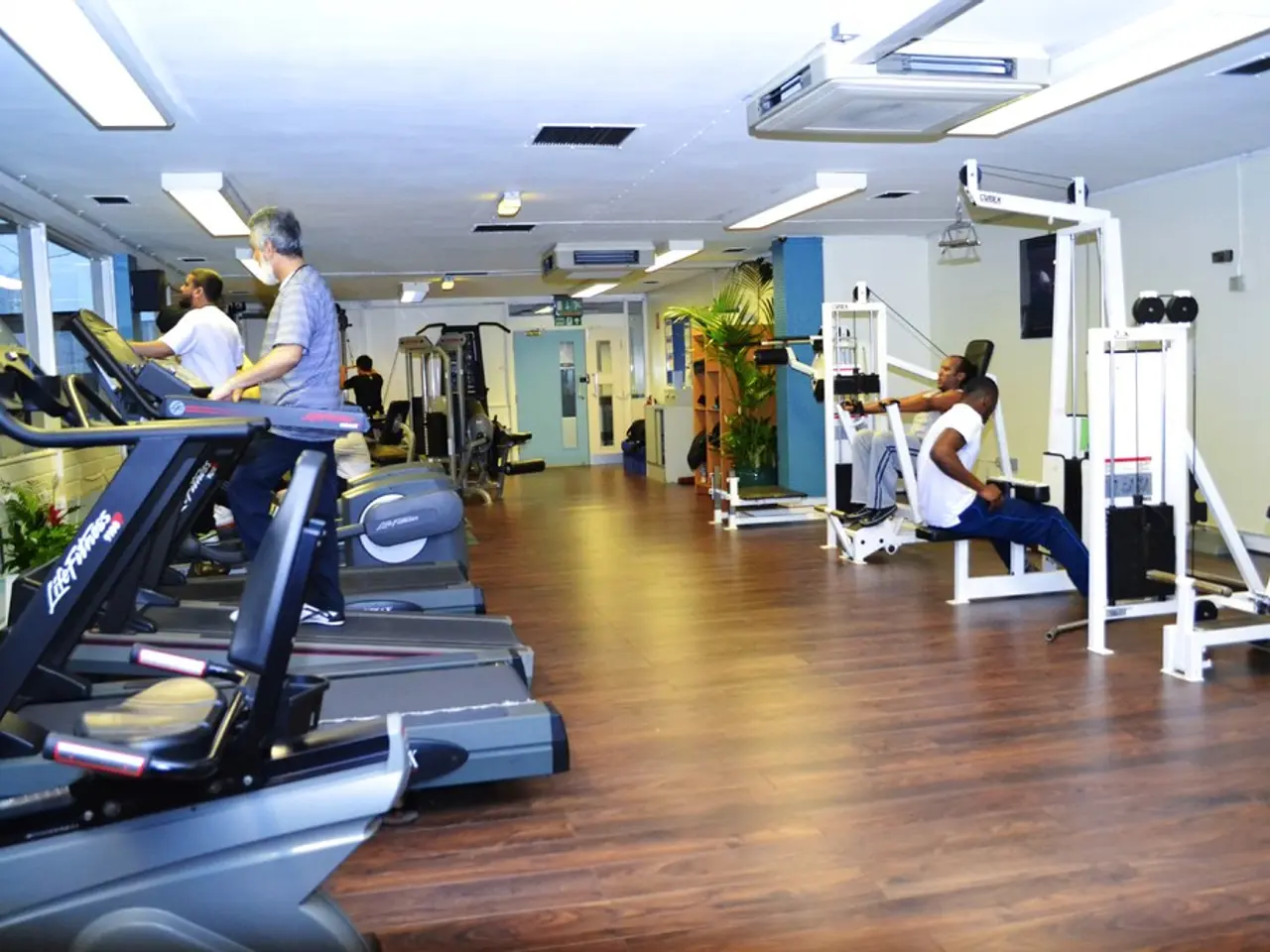Mastering the pull-up for the first time can be a challenge, but with these simple exercises, you'll be on your way:
Pull-ups are a versatile exercise that offers numerous benefits for overall body strength and core muscles. As a compound exercise, they engage multiple muscle groups simultaneously, including the back, shoulders, arms, chest, and core [1][3][5]. By lifting your entire bodyweight, pull-ups build upper body strength, improve grip strength, and promote better posture and bone health. The core muscles are strongly engaged during pull-ups to stabilize the body throughout the movement, enhancing overall core stability and strength.
Gede Foster, the director of fitness and performance at digital fitness platform FIIT, recommends a five-move workout to build the strength needed for a pull-up. This workout, which can be performed at home using a doorframe pull-up bar, is suitable for beginners and advanced fitness enthusiasts alike.
The Five-Move Workout
- Lat Pulldown: Perform 3 sets of 8-12 reps using a gym bar or a band-assisted pull-up if no gym is available. Bring the bar to your chest, not behind your head.
- Inverted Row: Complete 3 sets of 8-12 reps. Use a low bar or a bar around chest or shoulder height, depending on your ability. The further your feet are placed away from the bar, the more challenging the exercise becomes.
- Negative Pull-ups: Lower yourself slowly from the top of a pull-up position. Aim for 3 sets, focusing on the lowering phase to build strength gradually.
- Iso-holds: Hang from a bar for a set amount of time with a bent arm position. This exercise targets the mid- and upper-back muscles.
- Assisted Pull-ups: Use a resistance band or weight belt to help with the pull-up motion. Perform 3 sets of 5-10 reps.
Preparing for Your Pull-Up Workout
Before attempting a pull-up, it's essential to warm up well. Mobilize your shoulders, chest, and back to prevent injury. Foster suggests performing a couple of sets of retracted hangs and hanging shrugs to prime your body for a pull-up attempt.
When ready to attempt a pull-up, Foster recommends doing so after your body has recovered from the last workout. Rest for around 60 seconds between each set to ensure proper recovery.
Performing a Home Pull-Up Workout
To perform a pull-up workout at home using a doorframe pull-up bar, follow these steps:
- Install the Doorframe Pull-Up Bar securely on a sturdy doorframe, ensuring it is stable and can support your weight.
- Grip the Bar with your hands slightly wider than shoulder-width apart, palms facing forward (overhand grip) or towards you (chin-up grip), depending on the variation.
- Engage Your Core to maintain body stability throughout the movement.
- Pull Yourself Up by driving your elbows down and back, bringing your chin above the bar while keeping your body straight.
- Lower Yourself Down in a controlled manner until your arms are fully extended.
- Repeat for desired reps and sets, aiming to build strength gradually.
For beginners, assisted variations or negative pull-ups (focusing on the lowering phase) can help build strength over time. Using a doorframe pull-up bar at home allows convenient, effective training to improve upper body and core strength regularly.
In a video, Gede Foster demonstrates a pull-up with hands just wider than shoulder-width apart, a straight body from shoulders to ankles, an engaged core, and chin above the bar. With dedication and consistency, you can master the pull-up and reap its numerous benefits for your overall fitness and well-being.
- Following Gede Foster's five-move workout, individuals can strengthen their upper body and improve core stability for pull-ups, which are essential components of a comprehensive fitness and health-and-wellness routine.
- By incorporating science-backed workout techniques, such as the five-move workout recommended by Gede Foster, individuals can enhance their fitness-and-exercise regimen and experience the overall benefits of regular pull-up exercises for their health and wellness.




